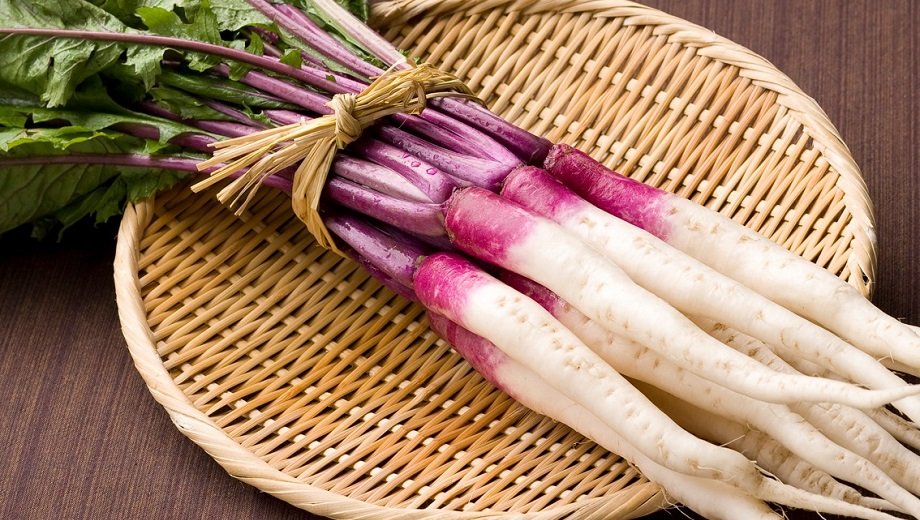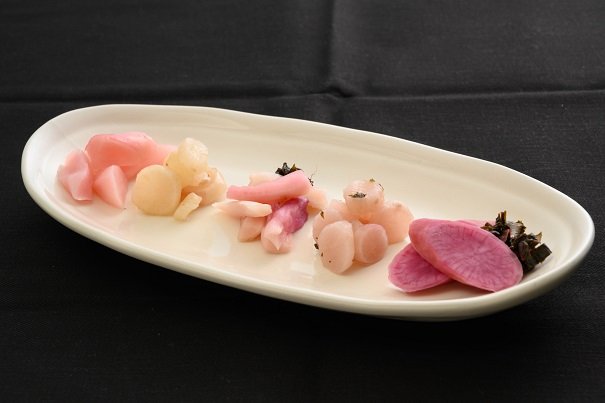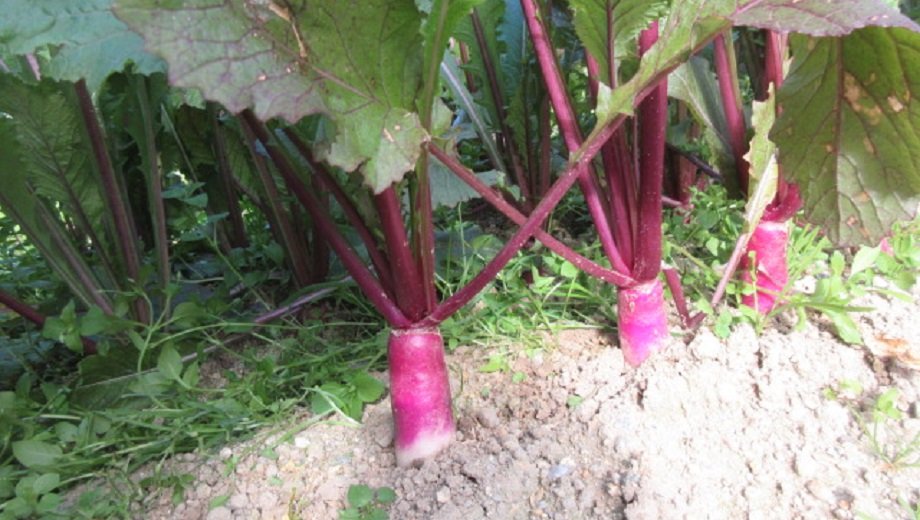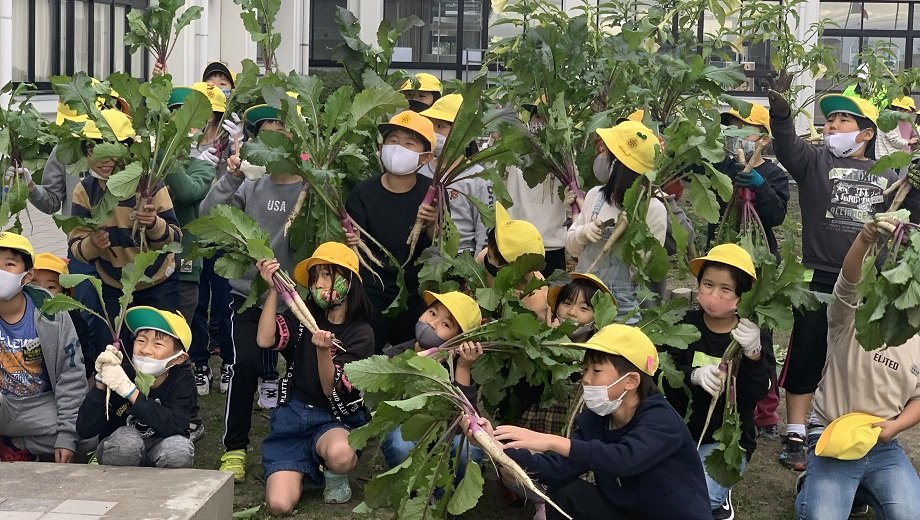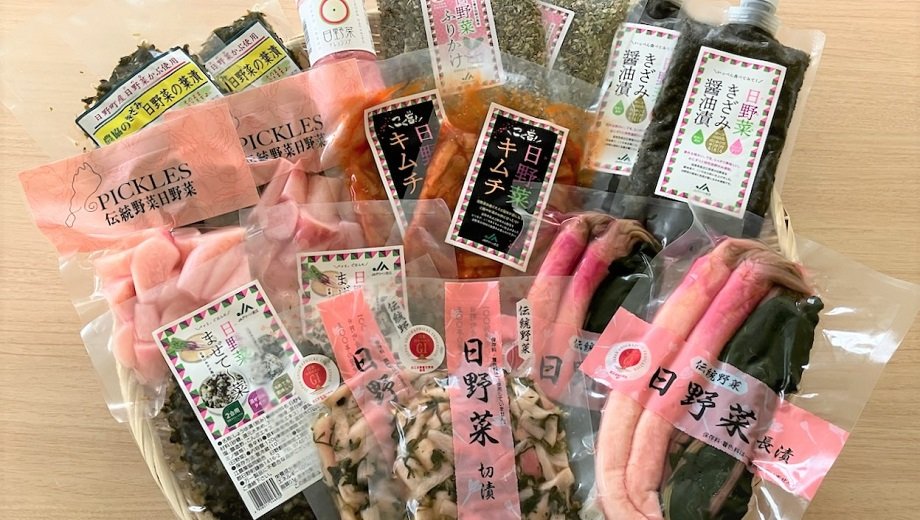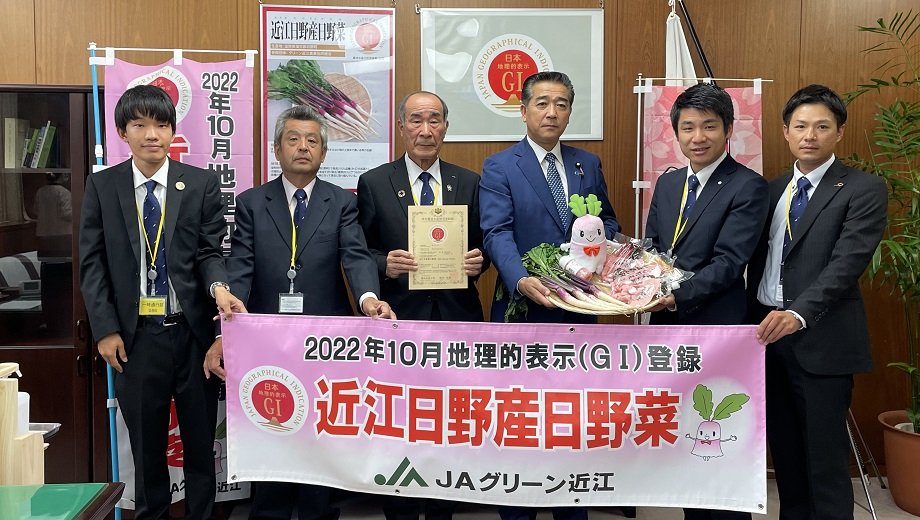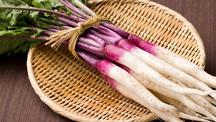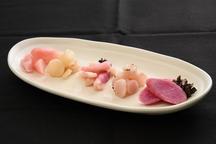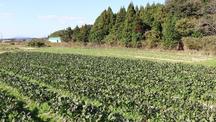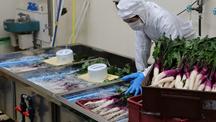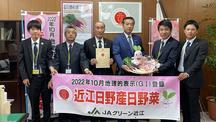Omi Hinosan Hinona
| Registration Number | 122 |
|---|---|
| Name of the GI | Omi Hinosan Hinona |
| Class | Vegetables/ Cereal grains/Pulses |
| Date of Protection | 2022/10/21 |
| Producing Area |
Shiga Prefecture
Hino Town, Gamo County |
| Applicant - Name and Address | JA Green Ohmi 1-17 Yokaichicho, Higashiomi City, Shiga Prefecture |
Producing Area
"Omi Hinosan Hinona" is a traditional turnip variety that has been cultivated since the Muromachi period (1). It is characterized by a long and thin shape and dark reddish-purple color on the upper part of the root, which gives stable pink pigmentation when it is pickled even only with vinegar.
"Omi Hinosan Hinona" is cultivated in Hino Town, which is the producing area, using foundation seeds of Hinona collected in Hino Town.
The shipping standards are clean washing, no pest or insect damage, no cavity in the root, and no branched root or root cracking.
The producing area of "Omi Hinosan Hinona" has well-drained and appropriately moist soil called kobiwako group (loam and sandy loam) and is adequate for cultivating Hinona.
During the Muromachi period, Omi Hinosan Hinona turnip was presented to Emperor Go-Kashiwabara (2) because it has elegant color and flavor when pickled. There is a tale saying the Emperor returned a tanka poem praising the delicious pickles to the lord of the producing area.
Foundation seeds of "Omi Hinosan Hinona" were once collected at each farm in the area.
The vegetable is rooted in the area, where the crossing was prevented by locally cutting down all yellow flowers in early spring, a practice called "zatsunagari." However, the number of farms engaged in inheriting the collection of foundation seeds decreased to only one in 2000.
In 2005, a dozen or so farms in Miyamaguchi District founded the "Miyamaguchi Hinona Foundation Seeds Association," which has undertaken foundation seed collection and inherited the foundation seeds and local tradition.
In the producing area, training of new producers has also been active. In 2019, spring harvest Hinona cultivation increased to 18 farms with an area of 1.74ha; and autumn harvest cultivation increased to 37 farms covering 6.16ha.
- The Muromachi period is a division in Japanese history running from 1336 to 1573. It began when Ashikaga Takuji established the shogunate in Muromachi, Kyoto, and continued for about 240 years until the 15th shogun, Ashikaga Yoshiaki, was driven out of Kyoto by Oda Nobunaga.
- Emperor Go-Kashiwabara was the 104th emperor of Japan. He compiled "Hakugyokushu," which was a representative collection of poems at the end of the Muromachi period, and the diary "Go-Kashiwabara Tenno Shinki."
